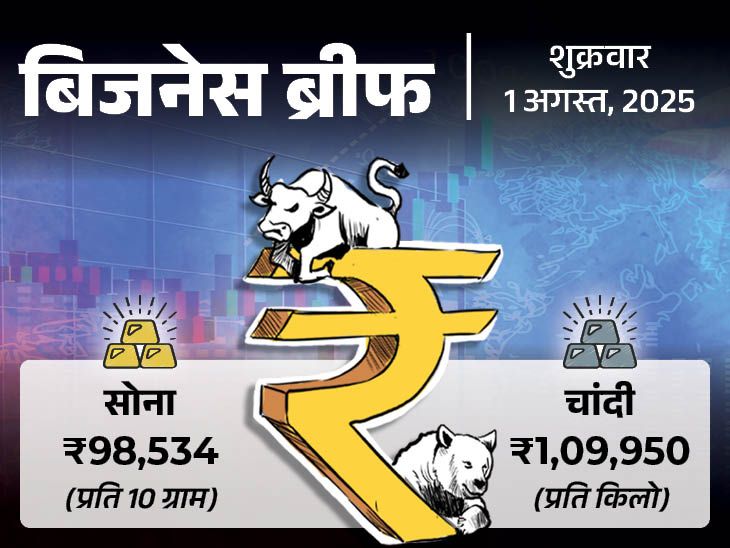Mumbai1 minute ago
- Copy link

The outstanding credit card payments from 91 to 360 days in India have increased by 44.34% in the last one year. By March 2025, this amount increased to Rs 33,886.5 crore, which was Rs 23,475.6 crore in March 2024. That is, there has been an increase of about Rs 10,410.9 crore in a year.
This is the outstanding people who have not been able to repay for more than three months. In banking rules, it is considered a “non-performing assets” (NPA), as a bad debt, as in the loan of banks.
This information has been revealed in the report of CRIF High Mark. CRIF is a credit bureau registered with the High Mark Reserve Bank of India i.e. RBI.
The highest stress in the outstanding segment of 91-180 days
The outstanding amount in this overdue segment has increased to Rs 29,983.6 crore, which was Rs 20,872.6 crore last year. This amount has almost doubled from the level of March 2023. These figures not only show the increasing dependence on credit, but also show the increasing inability or reluctance to pay on time.
Portfolio at risk increased to 8.2%
Another worrying figure has been revealed in the CRIF High Mark report, called “Portfolio at Risk” (Par). This is the part that suggests how much debt of credit card is at risk. In March 2025, Par increased from 6.9% to 8.2% in 91–180 days arrears.
Similarly, in 181-360 days dues, par increased from 0.9% to 1.1%, which was 0.7% in 2023. These figures show that the debt of credit card is not only increasing, but it is staying united for a long time.
Credit card use also increased
The increase in credit card dues is seen with a jump in the use of credit cards across the country. By March 2025, the credit card transaction value reached Rs 21.09 lakh crore, which was Rs 18.31 lakh crore last year. That is, it has increased by about 15%.
According to RBI data, the number of credit cards has also increased rapidly. In May 2025, there were 11.11 crore active credit cards in the country. Its number was 10.33 crore in May 2024.
What is the reason for the boom in credit card use?
Banks and Fintech companies have fiercely publicized credit cards with offers. The customer is shown benefits like cashback rewards, travel benefits, interest-free EMI and airport lounge access.
What is the reason for increasing credit card dues?
For many people living in cities, the credit card has not just a payment method, but has become a part of lifestyle. But swipe the card is as easy as it is not as easy to pay the bill.
If the arrears are not paid on time, the annual interest rate can range from 42% to 46%. People often get caught in offers and rewards. But if they do not pay on time or do not pay the entire bill on time, then their debt increases rapidly.
Increase in dues threat to the entire financial system
Such a rapid increase in credit card dues is becoming a threat not only for the common people, but also to the entire financial system. Credit card loans are unsafe, that is, there is no bail behind them.
Increasing defaults can affect the balance sheet of banks and make it further tightened the lending rules, which can reduce credit growth. Credit growth is a major factor to increase consumption in India. If consumption will not increase, our economy will not increase rapidly.
What will be the effect on customers?
For customers, it directly affects the credit score. If you do not pay the bill for more than 90 days, the credit card can be freeze and your credit score may be spoiled.
This makes it difficult to take a loan in future. In addition, banks can hand over your case to collection agencies, who constantly try to collect money by making phones and pressure.



